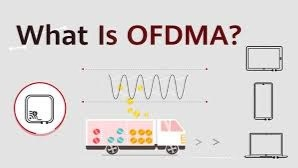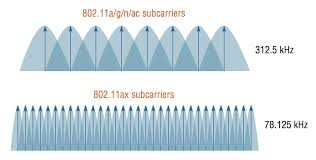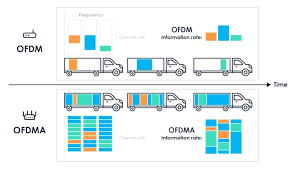
As Wi-Fi continues to evolve to meet the demands of modern connectivity, one standout technology has revolutionized wireless networks: Orthogonal Frequency-Division Multiple Access (OFDMA) . Introduced with Wi-Fi 6 (802.11ax), OFDMA redefines how devices share spectrum, improving efficiency and performance in crowded environments. Let’s explore how OFDMA works, why it’s important, and how to analyze its behaviour.
OFDMA is a method that allows multiple devices to share a Wi-Fi channel by dividing it into smaller subchannels, known as Resource Units (RUs). Each device gets its own portion of the channel, enabling simultaneous communication rather than the traditional one-at-a-time approach.
For example, think of a freeway where every car has its own lane, avoiding traffic jams caused by vehicles waiting their turn. OFDMA brings this level of order and efficiency to Wi-Fi networks.

- Channel Subdivision: A Wi-Fi channel is divided into RUs of varying sizes, such as 26, 52, 106 tones, and more. Each tone represents a small frequency block within the channel.
- Downlink and Uplink Operations:
- Centralized Scheduling:The AP manages RU allocation, ensuring devices get the right resources based on their needs, such as bandwidth requirements or data urgency.

Benefits of OFDMA
The implementation of OFDMA has brought about a multitude of benefits to wireless networks, including:
- Increased Efficiency: By allocating resource units based on user needs, OFDMA minimises the amount of unused spectrum, leading to more efficient utilisation of network resources.
- Enhanced Capacity: The ability to serve multiple users simultaneously significantly increases the overall capacity of the network, enabling more devices to connect and access data without experiencing congestion or slowdowns.
- Improved Fairness: OFDMA ensures that users with different data requirements are treated fairly, preventing users with high data needs from dominating the network and depriving others of adequate bandwidth.
- Reduced Latency: By efficiently distributing data across multiple sub carriers, OFDMA minimises the time it takes for data to travel from a device to the network and back, resulting in lower latency and a more responsive user experience.
Wireshark Analysis:
- Inspect Beacon Frames: Filter: wlan.fc.type_subtype == 0x08
Look for the HE Capabilities field to verify OFDMA support.
- Analyze Trigger Frames: Filter: wlan.fc.type_subtype == 0x1e
These frames are sent by the AP to instruct clients on RU allocation for uplink transmissions.
→ HE_MU indicates DL-OFDMA - MU-RU
→ HE_TRIG indicates UL-OFDMA - BSRP
- Examine RU Allocations:Look for the RU details in the HE Operation fields to see how the spectrum is divided.
Practical Example
Imagine a bustling coffee shop with dozens of devices connected to the same Wi-Fi 6 network. Without OFDMA, devices take turns communicating, leading to delays. With OFDMA, the AP assigns RUs dynamically:
- Streaming devices might use larger RUs.
- IoT devices might utilize the smallest RUs, sending periodic updates.
By capturing and analyzing this traffic, you can visualize how the AP orchestrates these transmissions, ensuring all devices get the resources they need.
What are the differences between OFDMA and MU-MIMO?
OFDMA and MU-MIMO are both wireless technologies. OFDMA divides a channel into smaller subchannels for simultaneous data transmission from multiple devices, improving efficiency and reducing latency. MU-MIMO, however, allows an access point to communicate with various devices at once, increasing network capacity.
The Future of Wi-Fi with OFDMA
OFDMA is a cornerstone of Wi-Fi 6, and its benefits extend to Wi-Fi 7 and beyond. By enabling efficient, low-latency communication, it ensures wireless networks are ready for the demands of modern applications.
Whether you’re troubleshooting, optimizing, or simply exploring, understanding OFDMA opens new doors to improving network performance. Have you tried analyzing OFDMA in action? Share your experiences!
LinkedIn: ![]()